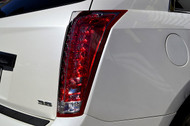Don't Forget to Inspect Your Vehicle's Gas Cap
19th Aug 2021

When was the last time that you inspected your vehicle's gas cap? All combustion-engine vehicles have a gas cap. Assuming your vehicle is equipped with a combustion engine that burns gas, it will have a cap. While it features a small size and simple construction -- typically made of plastic -- the gas cap plays an important role in your vehicle's overall performance.
The Purpose of the Gas Cap
The gas cap serves several purposes. As you may know, it's designed to seal your vehicle's gas tank. Combustion engines should only burn a mixture of gas and air. With a gas cap, your vehicle's gas tank will be sealed so that no contaminants enter it. Neither moisture nor dirt or debris will enter your vehicle's gas tank
Look for the CEL
If your vehicle's gas cap is bad, it may trigger the Check Engine Light (CEL). A loose gas cap, in fact, is one of the most common causes of the CEL. If your gas cap is loose, you may notice the CEL on your vehicle's dashboard. A loose gas cap means that it's not creating a complete seal with the gas tank. In turn, gas vapor will escape the tank. Most modern-day vehicles are designed to register this vapor leakage as a CEL.
Listen for the 'Clicks'
You should also listen for the "clicks" when tightening your vehicle's gas cap. As you tighten the gas cap, it should "click" into place. This "clicking" sound indicates that it's sealed. Some automakers recommend tightening the gas cap until you hear at least three "clicks." If you don't hear these "clicks," the gas cap may need replacing. A worn or damaged gas cap may fail to create a sealed environment with the gas tank, in which case you may not hear any "clicks" when tightening it.
Get It Tested
Of course, another idea is to get your vehicle's gas cap professionally tested. There are tools available that are designed specifically to test gas caps. You can hook your vehicle's gas cap up to one of these testing tools to see whether or not it offers a complete seal. The testing tool will essentially pressurize the gas cap while simultaneously checking to see whether or not it's leaking.
You can buy a gas cap testing tool and perform it yourself, or you can get your vehicle's gas cap professionally tested. Most emissions centers have a gas cap testing tool. By visiting an emissions center, you can ask a professional to test your vehicle's gas cap.

